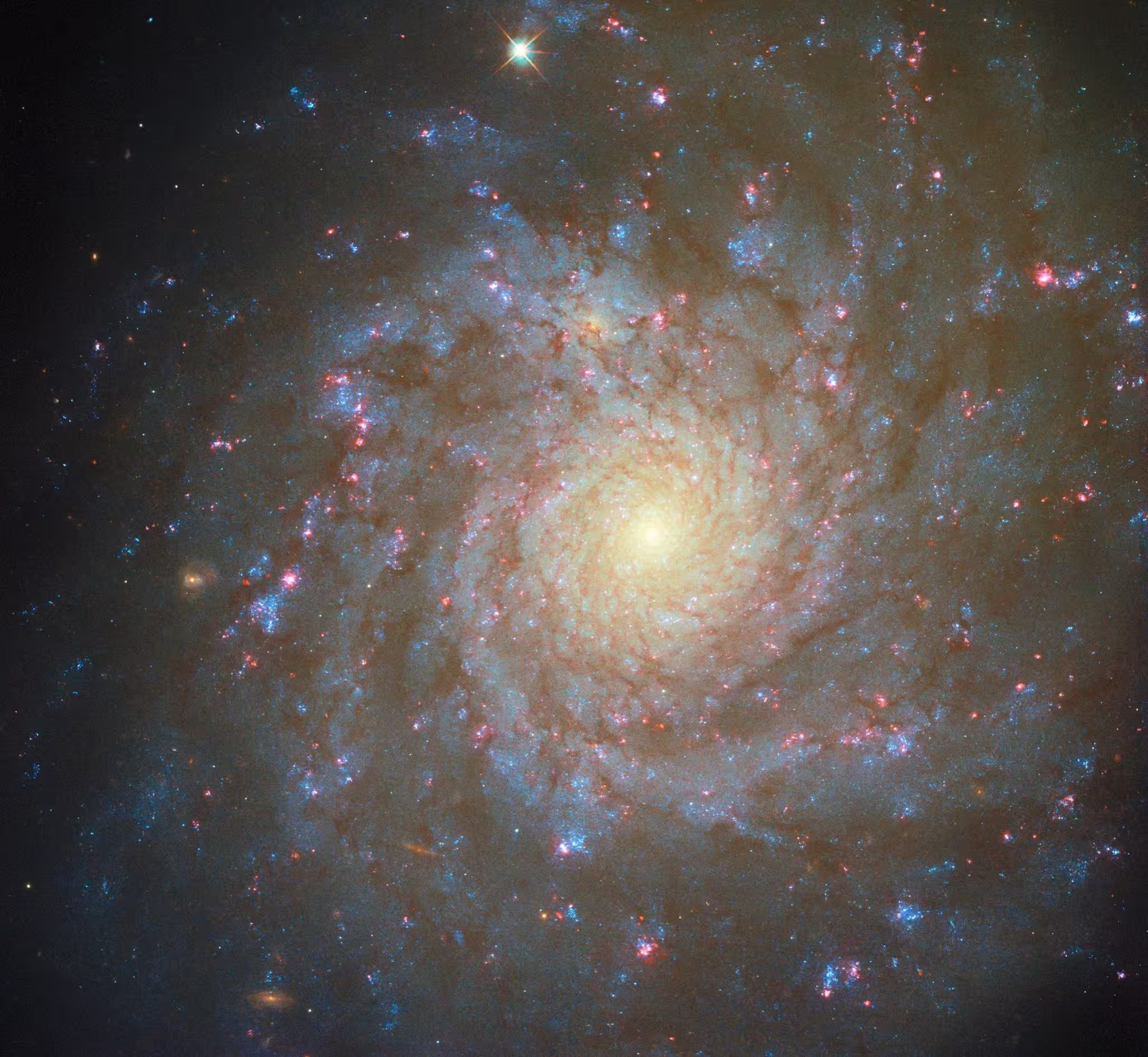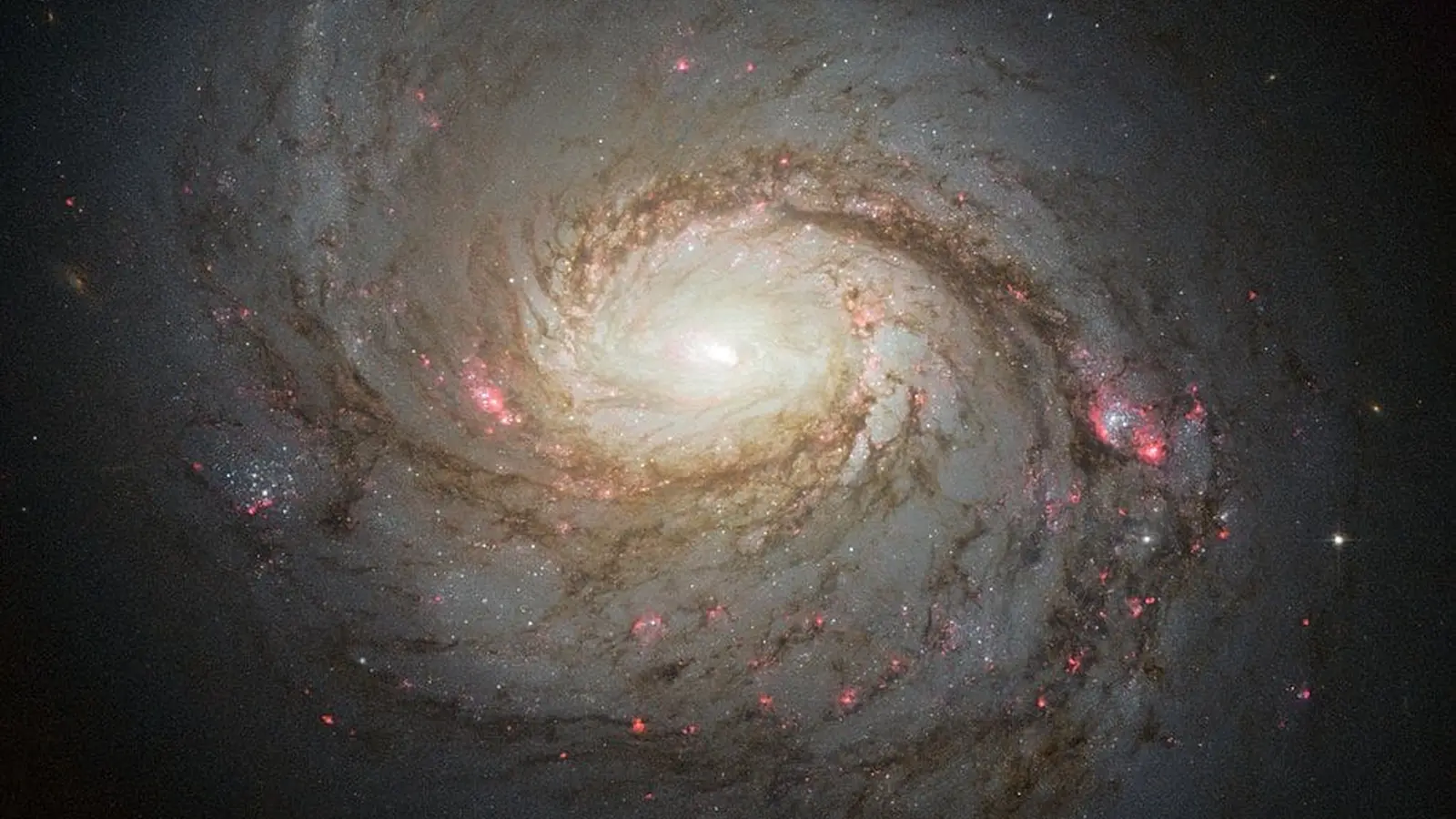3 Minutes
Hubble’s striking view of NGC 4571 reveals a glittering spiral galaxy alive with newborn stars and glowing pink nebulae. Hubble captures NGC 4571 glowing with star-forming nebulae and sparkling clusters woven through its spiral arms.
A vivid spiral galaxy sits at the center of Hubble's latest picture of the week: NGC 4571, a galaxy roughly 60 million light-years away in the constellation Coma Berenices. The image highlights bright star clusters threaded through delicate spiral arms and striking pink nebulae where massive young stars energize their surroundings. The view is both a snapshot of ongoing stellar youth and a window back to the freezing, shadowed places where stars begin.
A snapshot of newborn stars and the cold clouds that birthed them
The pink regions in Hubble's image are emission nebulae—clouds of gas ionized by ultraviolet light from hot, massive stars. In those glowing pockets the gas reaches temperatures near 10,000 K, producing the vivid reds and pinks astronomers often associate with star-forming regions. But those illuminated cocoons are only the late act of star formation. The very first stages take place deep inside giant molecular clouds tens to hundreds of light-years across, where temperatures drop to just a few degrees above absolute zero and dust blankets newborn stars from view.

From cold to bright: the role of gravity and compression
Star formation is a story of collapse. Gravity steadily pulls gas inside a molecular cloud into denser clumps. As a clump contracts, pressure and temperature at its core rise until nuclear fusion ignites and a protostar becomes a true star. Massive stars heat and ionize the surrounding gas, creating the luminous nebulae visible to telescopes like Hubble. The image of NGC 4571 captures both the luminous, ionized regions and the broader, dusty spiral structure that hosts cold molecular reservoirs.
Why multi-observatory studies matter
NGC 4571 has been part of coordinated programs that combine Hubble observations with data from the James Webb Space Telescope and the Atacama Large Millimeter/submillimeter Array (ALMA). Projects such as PHANGS-HST bring together optical, infrared, and radio views to reveal different stages of the star-formation lifecycle—from dust-shrouded cores seen by ALMA to infrared-tracing warm dust and Hubble's optical look at ionized gas and young clusters.
Recent releases add targeted observations focusing on dust, helping astronomers correct for obscuration and better estimate how many young stars remain hidden inside their birth clouds. By layering datasets across wavelengths, researchers can measure star-formation efficiency, the impact of feedback from massive stars, and how spiral-arm dynamics shape where stars form.
Images like this do more than dazzle: they refine models of how galaxies convert cold gas into stars and how dust changes the signals astronomers use to count stellar births. As multi-observatory surveys expand, NGC 4571 becomes a clearer laboratory for understanding the universal process that turns freezing, dark clouds into brilliant new stars.
Source: scitechdaily


Leave a Comment